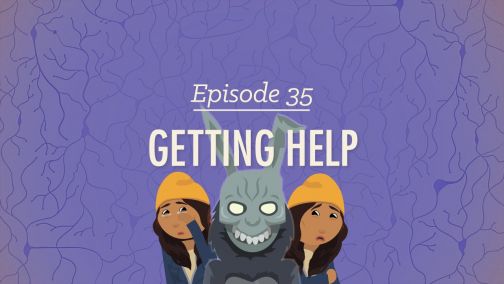Understanding Exposure Therapy
What is ERP?
ERP, or Exposure and Response Prevention therapy, is a form of Cognitive Behavioral Therapy. It is considered the gold-standard for OCD treatment, as well as related anxiety disorders like PTSD and Social Phobia.
ERP works by slowly exposing people to the thoughts, images and objects that trigger their anxiety. They repeat these "exposures" over and over again, without acting out compulsions to neutralize or stop the fear. Overtime, the anxiety associated with these triggers starts to subside.
ERP practices should be used inside and outside of therapy for the greatest impact. The more its techniques are roped into a person's everyday life, the stronger their coping mechanisms will become. It is recommended that people master ERP in a controlled, clinical setting before attempting to practice it on their own.

Choosing Exposure Response Prevention (ERP) Therapy
Dr. Phillipson explains the benefits of Exposure and Response Prevention Therapy.
Is ERP the same as CBT?
All recommended therapies for OCD fall under a model of treatment known as Cognitive-Behavioral Therapy, or CBT.
CBT works by challenging negative thinking patterns and behaviors. It’s rooted in the idea that our attitudes greatly impact how we think and behave. In CBT, a therapist helps a person replace negative thinking patterns and behaviors with more positive ones. It is rooted in the idea that symptoms of mental disorders can be minimized by learning new ways to process information and develop healthy coping habits.
The two most trusted therapies for OCD — ERP and ACT — are both types of CBT therapy. There are other types of CBT available. You can learn about them here.
How does ERP work?
To start, a therapist will work one-on-one with their patient to identify primary triggers and related compulsions. In other words, what are the main sources of anxiety and how is a person responding to this anxiety in unproductive ways?
Once those are established, they'll work together to create something called a "fear" or "exposure" hierarchy. This hierarchy is a checklist of activities that increase in intensity as a person makes progress.
To create a fear hierarchy, a person will identify an obsession that they're struggling with. They'll then set a goal they'd like to reach related to their obsession. This goal should be realistic and specific. If it's too broad or aspirational, a patient might get down on themselves for not reaching it. For example, a person with Harm OCD should not set the goal of "never being anxious." Anxiety is a natural part of life and cannot be completely avoided. A better goal, would be "enjoying cooking at home without fixating on the presence of knives."
Once that goal is set, a therapist will create a hierarchy of exposure activities that will help their patient reach this goal. These tasks will be performed one-by-one until their anxiety starts to subside. After each task, they'll make note of their anxiety levels before moving onto the next activity.
For example, a person with Contamination OCD might have a fear of swimming in public pools because they are worried they'll contract a life-threatening disease. A fear hierarchy for them might look like this:
Fear
Being contaminated by life-threatening diseases at public pools
Goal
Enjoy time at the pool without experiencing intense anxiety
Fear Hierarchy:
- Task 1: Drive by the local pool each day for one week and pay attention to all the people swimming.
- Task 2: Watch YouTube videos of people swimming in crowded, public pools.
- Task 3: Bring your sibling to the local pool and watch them swim.
- Task 4: Bring your sibling to the local pool and walk around without shoes on.
- Task 5: Go with your family to the pool and get your feet wet.
- Task 6: Go with your family to the pool and wade in up to your chest.
- Task 7: Go with your family to the pool and dunk your head under water.
- Task 8: Go with your family to the pool and spend 5 minutes in the water.
- Task 9: Sign up for a 50 minute one-on-one swim session at the pool.
- Task 10: Attend a pool party and swim with friends.
When a person reaches the end of their fear hierarchy, they should have substantially minimized the anxiety associated with their trigger. That said, they won't be cured of their anxiety. Many patients will go through this process over and over again, targeting different triggers each time. Along the way, they'll develop healthy coping mechanisms that make their managing anxiety in real-time easier and less stressful. It's important to remember that fear hierarchies are subjective and should be created with the help of a trained professional, before being attempted outside of therapy.
From the Community
What should I expect from ERP?
Most effective OCD treatments require hard work and dedication. ERP is no exception. For it to work, you have to put time and energy into the process. That said, therapists are sympathetic to the difficulty of ERP therapy, and will work with you to establish a pace that feels right.
ERP is different from traditional therapy because it focuses less on talking through issues and more on addressing them through action. That’s not to say you won’t discuss your exposures — there’s plenty of analyzing that gets done through conversation. Just prepare yourself for the uniqueness of ERP therapy and how it differs from talk therapy.
If you’re starting ERP therapy, here are a few things you can expect:
Homework: You’ll be asked to fill out worksheets or practice techniques outside of therapy. Make sure to commit to these assignments. They are crucial to progress.
Doubts: Many people spend their first few weeks, or even months, wondering how much of an impact their treatment is having. ERP takes time. You must be willing to be patient in order to see results.
Discomfort: ERP is supposed to make you uncomfortable. Don’t let this scare you off. If you’re anxious, it’s likely working.
Self-awareness: In order to be successful at ERP, you have to be willing to analyze and critique yourself. Prepare to discuss your emotions and the tasks at hand. Hold yourself accountable when necessary.
Discipline: ERP takes real work. And for its effects to last, you have to practice outside of your weekly therapy session. Don’t let yourself falter.
Is ERP hard?
Depends on who you are! No two journeys are the same. Every sufferer has their own opinion on the methods that work and don’t work for them. That said, no one should expect therapy to be easy. All options take time, energy and dedication. They require a real desire to get better. If you’re searching for a quick fix, you’re going to come up short.
If you’re feeling overwhelmed by your treatment journey, focus on the here and now. Therapy only needs to be as intimidating as your next session. Don’t think in terms of weeks, months and years. Think “I have X number of days until my next session, and X number of assignments to get done. That’s not so bad!”
How do I perform exposures outside of a session?
Once a person has grasped the concept of ERP, they'll likely be asked by their therapist to start implementing exposures outside of scheduled sessions. This might sound intimidating, but it means that progress is being made!
It helps to create a plan for yourself. A lot of people will use apps to schedule their exposures so that they can stay on track. When they receive a reminder, they’ll step away from what they’re doing to practice their exposure. Some people can do them at work, others might need to do them at home. Whatever works best for you is the right call. If you’re doing them in public spaces, make sure you have a game plan in the event that your anxiety spikes. Is there a bathroom near by that you can retreat to? Do you have the ability to take a walk or find quiet space to reset?
Some people like to tell their family, friends, romantic partners or bosses that they are practicing ERP. Having allies in recovery is important. They can help you stay accountable, on track, and supported while you’re working through something really tough.
Lastly, use your therapist as a resource. They want to help. If you feel you need it, ask for advice on completing worksheets and exposures. If something goes wrong during an activity, let them know. Don’t be afraid to open up and ask for help.
Are there more resources I can check out?
Of course! What we’ve provided is really only an intro to ERP. There is so much more to be explored. Below you’ll find other sites, worksheets, videos and books that can help you better understand and practice ERP.
Webpages
- Facing your Fears: Exposure from Anxiety BC
- Exposure and Response Prevention from the IOCDF
- How Having an Exposure Hierarchy Can Help Control OCD
- My Fear Hierarchies
Worksheets / Toolkits
- Fear Ladder Examples from Anxiety BC
- Self Help: Managing Your OCD at Home
- Exposure And Response Prevention PDF
- Hierarchy of Feared Situations
Organizations
Books
- Daring to Challenge OCD: Overcome Your Fear of Treatment & Take Control of Your Life Using Exposure & Response Prevention by Joan Davidson, PhD
- Treating Your OCD with Exposure and Response (Ritual) Prevention Therapy: Workbook (Treatments That Work) by Elna Yadin, Edna B. Foa, Tracey K. Lichner
Support our work
We’re on a mission to change how the world perceives mental health.




